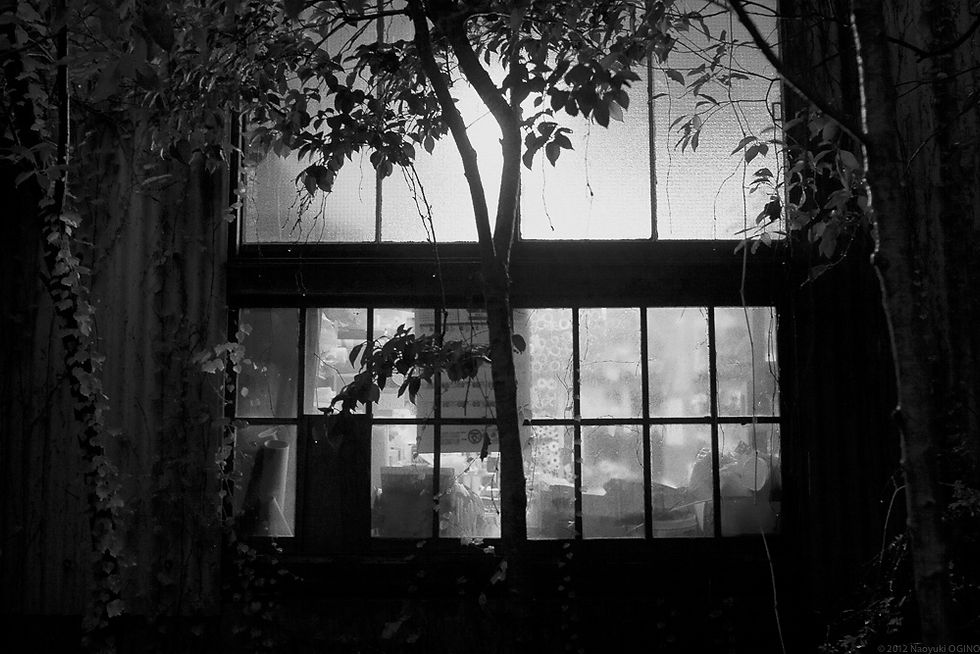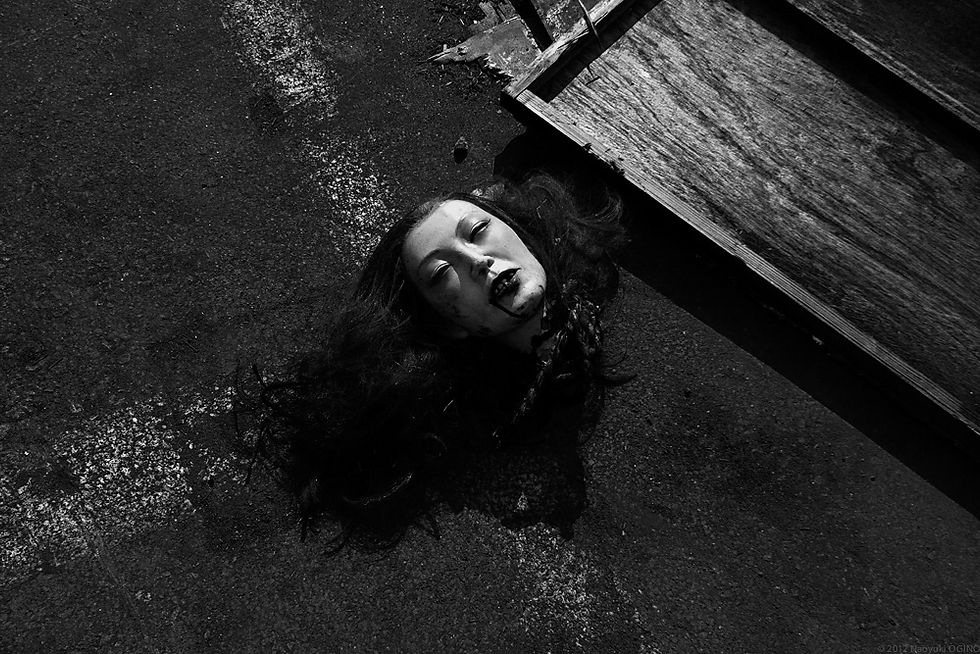Official Website of Artist Naoyuki Ogino
Womb of the Myth













































Womb of the Myth
I have been taking these photographs in the movie studio at Uzumasa Kyoto, Japan for many years. In this work I have been searching for the seismic zones where today’s myths are fashioned through the handy work and breathe of professionals. I wanted to turn away from the banks or the companies with computers, and toward someplace with the sense of sacredness, where craftsmanship still guides the imagination. I found this place. This is not anymore the center of a vital industry; it is almost the last place where the practice of traditional Japanese movie craftsmen remains. This last citadel is now sinking. In 2011, three studios disappeared, and the longest running traditional Samurai drama with 43 years of history was closed. But still in this place, I sense a gravity rising from huge stacks of used sets and their atmosphere.
All of this has become a kind of simulacrum, accumulating during the 60 years of recurrent construction and destruction that has played in the service of imaginal screens. What remains of the screenings, of the respiration of others is this simulacrum, this heap; this pile of the past that is at once empty and thick. What rests here, is more than the dust of storytellers, more than craftsmanship; what rests here is our ancient past, our gods and our future.
Womb of the Myth
私は数年にわたって、京都市の太秦にある映画の撮影所でこのシリーズを撮影してきました。現代の物語が、職人の手仕事や息吹によって織りなされている現場に出会いたかったのです。コンピューターだらけの銀行や企業の中ではなく、想像の世界がまだ職人たちの素手によって導かれているところ、神聖さがまだ漂っているところに出会いたかったのです。そしてついにこの場に辿り着きました。ここは今、物語にまつわる産業の最前線ではなくなってしまっています。日本の時代劇を支える職人たちの技が辛うじて残されている場です。そしてこの最後の砦も、難しいところにきています。2011年、3つのスタジオが取り壊されました。43年にわたって続いた時代劇『水戸黄門』の制作のセットも姿を消しました。しかし、この撮影所に私が通ったこの瞬間はまだ、この場所の使い古されたセットの数々や溜め置かれた無数の小道具、そしてこの場の雰囲気から、重力のようなものが感じられました。
これは正に一種のシミュラークル(ボードリヤールの言う、シミュレーションのシミュラークル)の現場なのかもしれません。スクリーンの後に残るもの、人の呼吸の後に残るもの、それはこのシミュラークル、そして空のような堆積。つまり過去が堆積していると同時に、空でもあり密でもあるような堆積。ここに積み重なっているものは、単に過去の物語が残した塵や埃などではなく、職人たちの技巧を遥かに超え、我々の過去そのものであり、神々そのものであり、未来そのものであるような気がしてならないのです。
Womb of the Myth
He estado tomando estas fotografías en el estudio de cine en Uzumasa Kyoto, Japón por muchos años. En este trabajo he estado buscando las zonas sísmicas donde los mitos de hoy se forman a través del trabajo práctico y respiran de profesionales. Quería alejarse de los bancos o las compañías con las computadoras, y hacia algún lugar con el sentido de lo sagrado, donde la artesanía sigue guiando la imaginación. Encontré este lugar. Esto ya no es el centro de una industria vital; es casi el último lugar en el que la práctica de los artesanos tradicionales de películas japonesas permanece. Esta última ciudadela está hundiendo. En 2011, tres estudios desaparecieron, y el funcionamiento del drama samurai tradicional más larga con 43 años de historia fue cerrado. Pero aún en este lugar, tengo la sensación de una gravedad creciente de enormes pilas de conjuntos utilizados y su atmósfera.
Todo esto se ha convertido en una especie de simulacro, acumulando durante los 60 años de construcción y destrucción recurrente que ha jugado en el servicio de las pantallas imaginal. Lo que queda de las proyecciones, de la respiración de los demás es el simulacro, este montón; este montón de pasado que es a la vez vacío y grueso. Lo que descansa aquí, es más que el polvo de narradores, más de la artesanía; lo que descansa aquí está nuestro pasado antiguo, nuestros dioses y nuestro futuro.